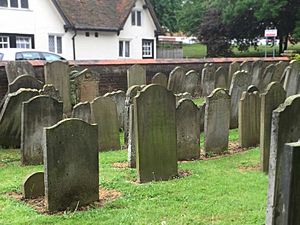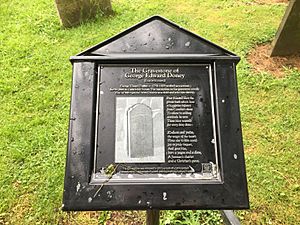George Edward Doney facts for kids

George Edward Doney (around 1758–1809) was a remarkable person who lived in England. He is thought to have been born in Gambia, West Africa, around 1758. When he was just a young boy, he was sadly taken to America and forced into slavery.
Around 1765, George Doney came to Watford, Hertfordshire, in England. He worked as a servant for the important Earl of Essex family at their large home, Cassiobury House. He stayed with the family for 44 years, serving them for most of his life.
George Doney earned a lot of respect at Cassiobury House. He became a Christian and was baptised at St Mary's Church, Watford on 1 August 1774. The Earl and Countess of Essex, his employers, even supported the book written by Olaudah Equiano. Equiano was a former slave who became a very important voice in the movement to end slavery, known as the abolitionist movement.
Contents
George Doney in Art
A Special Painting
There is an unfinished painting from about 1809 called 'Harvest Home'. It was painted by a famous artist named J.M.W. Turner. He painted it during his second visit to Cassiobury House.
Who is the Black Servant?
The painting shows a black servant at a harvest dinner inside one of the barns at Cassiobury House. In many old paintings from Western countries, black people were often shown at the edge of the picture. They usually looked like less important characters.
But in Turner's painting, the servant is placed right in the main group of people. This suggests that this servant was very important in the Cassiobury household. Many people believe that this person in the painting is actually George Doney himself.
His Death and Burial
A Free Man's End
George Doney died in 1809. He was a free man, which means he was no longer enslaved. This was just two years after Britain officially ended the Atlantic slave trade with the Slave Trade Act of 1807.
His Gravestone
George Doney was buried at St Mary's Church on 8 September 1809. A beautiful headstone was placed in the churchyard to mark his grave. It has a special poem written on it. In 2008, his gravestone was given a special status called Grade II listed. This means it is an important historical structure that needs to be protected.


